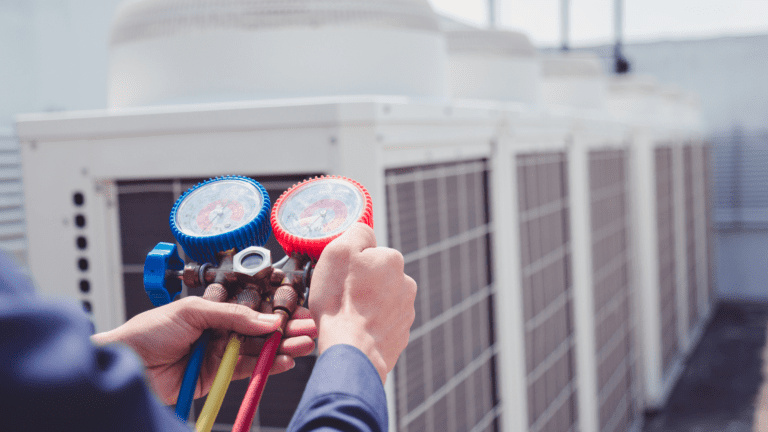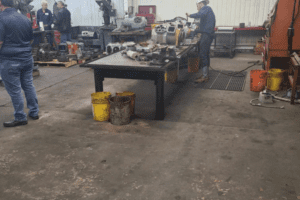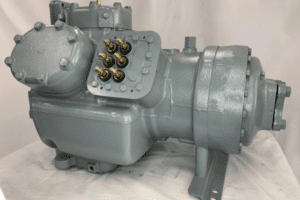

Refrigeration ensures produce, meat, dairy, and other foods stay fresh on the journey from farm to processing plant to grocery store. When they finally reach your home, they go right into the refrigerator: And we all know what it’s like to have a sudden fridge breakdown threaten the groceries!
Air conditioning, on the other hand, makes life better in hot southern and southwestern climates. Arizona, Florida, southern New Mexico, southern Texas, and Southern California rely on air conditioning for most of the year. The humidity in Florida – with some areas remaining in the 90s well into October – would be unbearable without AC.
Although the basic concepts behind the chilling cycle remain the same, an AC compressor is not the same as a refrigeration compressor. They use similar components and some may even have a familiar system architecture, but they also vary in some essential ways.
The Five Main Types of Air Conditioning Compressor
In a previous post, we discussed the various types of refrigeration compressor. Most firms manufacture both refrigeration and air conditioning models. Between the two applications, the types and popularity of different engineering approaches varies, and they are virtually never cross-compatible.
The most common types of air conditioning compressor include:
1. Reciprocating Air Conditioner Compressor
The reciprocating AC compressor has the longest service history and is the most similar to comparable refrigeration compressors. A piston compresses the air by moving up and down inside a cylinder. The vacuum effect created by this motion sucks in the refrigerant gas. A reciprocating AC can suffer failures related to piston wear-out, but the potential to use up to eight cylinders makes it highly efficient.
2. Scroll Air Conditioning Compressor
The scroll compressor is a newer innovation and consists of a fixed coil, the scroll, that makes up the unit’s center. A second coil rotates around the central scroll, compressing the refrigerant and driving it toward the center. With fewer moving parts, the scroll compressor is noticeably more reliable.
3. Screw Air Conditioning Compressor
Screw compressors are typically restricted to large commercial buildings with lots of air to circulate and cool. The unit contains a pair of mated helical rotors that push air from one side to the other. Screw compressors are among the most reliable and efficient around, but not cost-effective for smaller applications.
4. Rotary Air Conditioning Compressor
Rotary compressors are the preferred option when operating noise is a factor. They are quiet, have a modest footprint, and do not suffer from vibration as much as other compressors. In the unit, a bladed shaft rotates within a graduated cylinder to push and compress refrigerant at the same time.
5. Centrifugal Air Conditioning Compressor
A centrifugal AC compressor is reserved for the largest HVAC systems. As the name implies, it pulls the refrigerant in using centrifugal force. The gas is then compressed using an impeller. Because of their intended use, centrifugal compressors are among the largest and most expensive.
How Are Air Conditioning Compressors Different from Refrigeration Compressors?
There are key differences that ensure you should never try to replace a compressor rated for AC use with one rated for refrigeration or vice versa. Rarely, it may be possible, but would be extremely inefficient. The compressor can fail without warning, and may damage the entire HVAC or refrigeration system.
Some major points of variation include:
- Different refrigerant used, which can cause instant system failure
- Differences in refrigerant pressure throughout the cooling process
- Configuration of the evaporator and condenser coils
- Operating temperatures of the condenser coils
Selecting the Right Air Conditioning Compressor for the Job at Hand
As with a refrigeration compressor, an air conditioning compressor should be selected for a close match with the operating environment. Choosing a compressor larger than the environment calls for leads to inconsistent performance and reduces energy efficiency.
Before choosing an air conditioning compressor to serve any part of a facility, map out the structure and its cooling needs. Some areas will require continuous cooling, and some, such as server rooms, may have higher demands than others. In hospitality or dining, it may be necessary for several different areas to have their own temperature zones. All of this must be balanced with your energy efficiency goals.
Although different AC compressors don’t usually work together directly, conditions in one part of a building affect all others. With that in mind, it’s wise to have a procurement plan in place for remanufactured commercial compressors. With a remanufactured compressor, you reduce the impact of unexpected breakdowns, getting fast unit delivery at a sharply reduced price without sacrificing quality.












